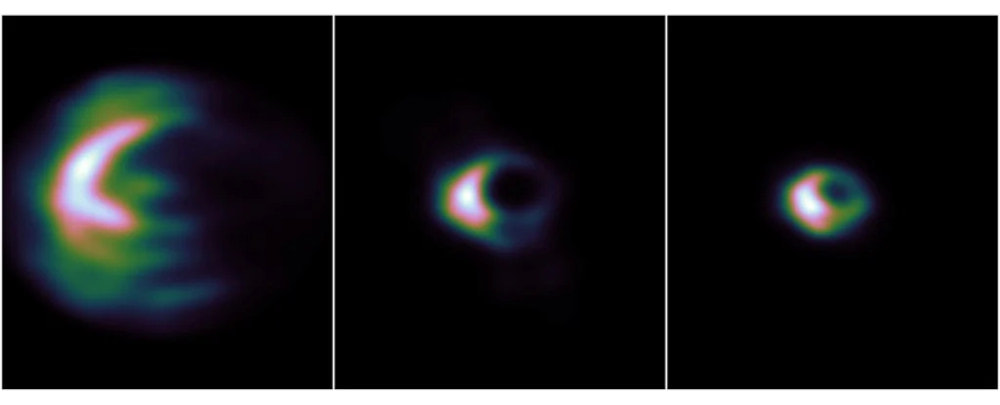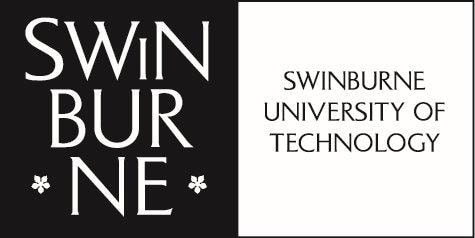|
There are some stars that just don’t look at all like stars. Rather than being composed nearly entirely of hydrogen and helium like other stars, they consist of matter that has no electromagnetic signature. These stars are hypothetical because we’re still refining the techniques to find them. Boson stars are just one in this family of objects, known as exotic stars, and they’re composed almost entirely of bosons. And what is a boson? It’s one of the two types of fundamental particles, the one that carries forces. The other, the fermion, is what makes up ‘normal’ stars, and all the other matter that we see. There are a variety of boson stars and sometimes they’re categorised to reflect the type of boson that they are made of. For example, Proca stars are vector boson stars, meaning that their constituent bosons have a spin of one. They’re also unique amongst boson stars because the stars themselves can spin without being disrupted. A boson star would most likely be shaped like an enormous donut because of the centrifugal forces acting on the bosonic matter, and, bizarrely, they’d be transparent; any matter absorbed by them would be visible at their centres. If boson stars do exist, they might provide the evidence we need for a long sought-after dark matter particle. That’s because the said particle, the axion, is a boson. And we’ve been searching (unsuccessfully) for axions in numerous experiments on Earth for decades. After the initial excitement of the first-ever observation of an intermediate-mass black hole—gravitational-wave event GW190521—it was quickly realised that the very existence of such an object was not consistent with any of our stellar models. Perhaps it was itself a product of previous, smaller, black hole collisions, or maybe there was something else at play. Thus, the challenge for scientists was to come up with a theory that could explain the presence of the intermediate-mass black hole progenitor of GW190521, while still being consistent with the original signal. And by assuming that it was caused by merging boson stars, rather than black holes, an international team of scientists, led by OzGrav alumnus Dr Juan Calderón Bustillo at the University of Santiago de Compostela and Dr Nicolás Sanchis-Gual at the University of Lisbon, might have been able to do just that. Apart from the problems associated with the pair-instability mass gap, any potential hypothesis needed to explain something a bit unusual about the GW190521 signal. Normally gravitational waves that originate in merging binary systems oscillate at higher and higher frequencies as the two progenitors spiral in towards each other. But for GW190521, the inspiral signal before the merger was barely detectable. An extremely abbreviated inspiral could perhaps be explained if two black holes collided head-on rather than by circling into each other, and so that is the first thing that Dr Bustillo and Dr Sanchis-Gual’s team looked at. What they found didn’t help much. ‘We first tried to fit the data to head-on collisions of black holes, but these happen to produce a final black hole whose spin is too low to reproduce the GW190521 signal. The reason is that the lack of an inspiral diminishes a lot of the spin of the final black hole, and the individual spins of the black holes, which also contribute to the spin of the final one, are bounded by a limit called the Kerr limit,’ says Dr Bustillo. That’s when the team started looking at boson stars, or Proca stars to be exact. They compared the GW190521 signal to computer simulations of Proca star mergers and found that statistically they were a considerably better fit to the data than when it was assumed that the progenitors were black holes. ‘First, we would not be talking about colliding black holes anymore, which eliminates the issue of dealing with a forbidden black hole,’ explains Dr Bustillo. ‘Second, because boson star mergers are much weaker, we infer a much closer distance than the one estimated by LIGO and Virgo. This leads to a much larger mass for the final black hole, of about 250 solar masses, so the fact that we have witnessed the formation of an intermediate-mass black hole remains true.’ This is an exciting result as the final black hole formed by the merger in this case would have to be about 62% larger than previously thought. And rather than the signal originating from a point that is now some 17-billion light-years from us, it would have been just over 1.8-billion light-years away. ‘Of course, there are potentially many ways in which this event may be explained, as this is an event for which we have very little information about what produced the final black hole we observe. The best we can say right now is that the data tells us that a collision of Proca stars is approximately 8 times more likely than the black hole collision scenario.’ And what of the implications of discovering the first boson stars? ‘That would be dramatic,’ says Dr Bustillo. ‘Boson stars and their building blocks—the ultralight bosons—are one of the most solid candidates for forming what we know as dark matter. If our result is further confirmed by future observations, it would represent the first actual measurement of the particle responsible for dark matter.’ ‘Gravitational-wave astronomy is still very much in its infancy,’ says Dr Rory Smith—an OzGrav researcher from Monash University and one of the collaborators in this research. ‘However, the fact that we’re already starting to draw connections between gravitational-wave observations and fundamental particle physics is a remarkable sign of how powerful this new field is. Even if future observations rule out boson stars as real astronomical objects, we should expect many new and exciting discoveries in the future.’ This is an edited extract from the original article featured in Space Times, written by Dan Lambeth.
0 Comments
Leave a Reply. |
|
- Home
- About
-
Our People
- Chief Investigators
- Partner Investigators
- Associate Investigators
- Postdocs and Students >
- Professional & Outreach staff
- Governance Advisory Committee
- Scientific Advisory Committee
- Executive Committee
- Equity & Diversity Committee
- Early Career Researcher Committee
- Professional Development Committee
- Research Translation Committee
- OzGrav Alumni
- Research Themes
- Education and Outreach
- Events
- News/Media
- Contact Us
- Home
- About
-
Our People
- Chief Investigators
- Partner Investigators
- Associate Investigators
- Postdocs and Students >
- Professional & Outreach staff
- Governance Advisory Committee
- Scientific Advisory Committee
- Executive Committee
- Equity & Diversity Committee
- Early Career Researcher Committee
- Professional Development Committee
- Research Translation Committee
- OzGrav Alumni
- Research Themes
- Education and Outreach
- Events
- News/Media
- Contact Us


 RSS Feed
RSS Feed








